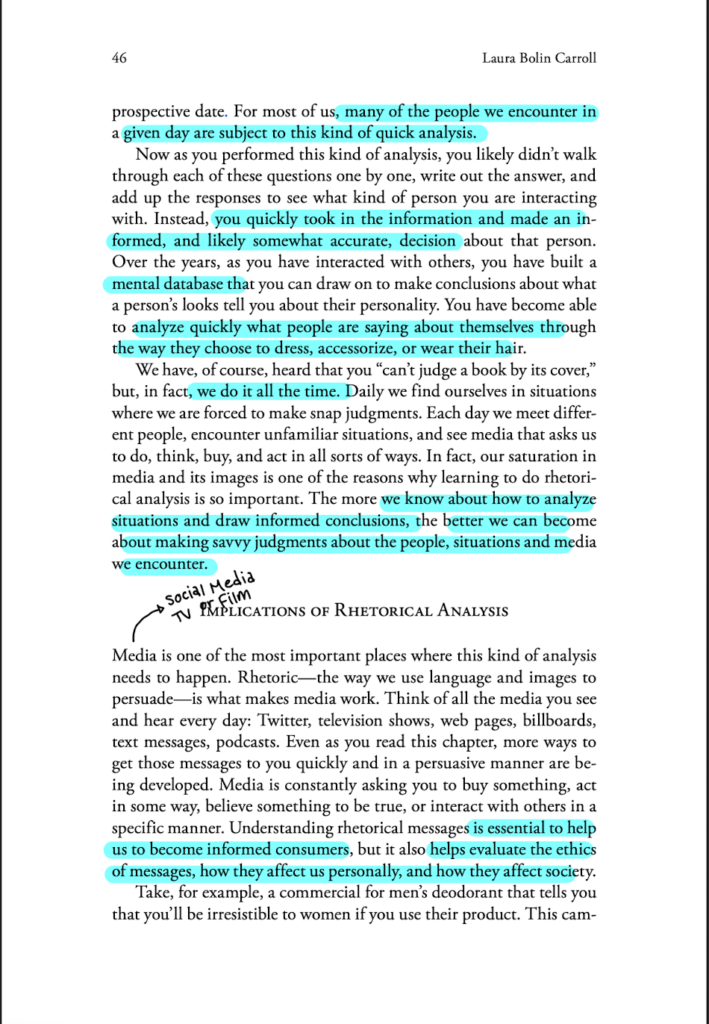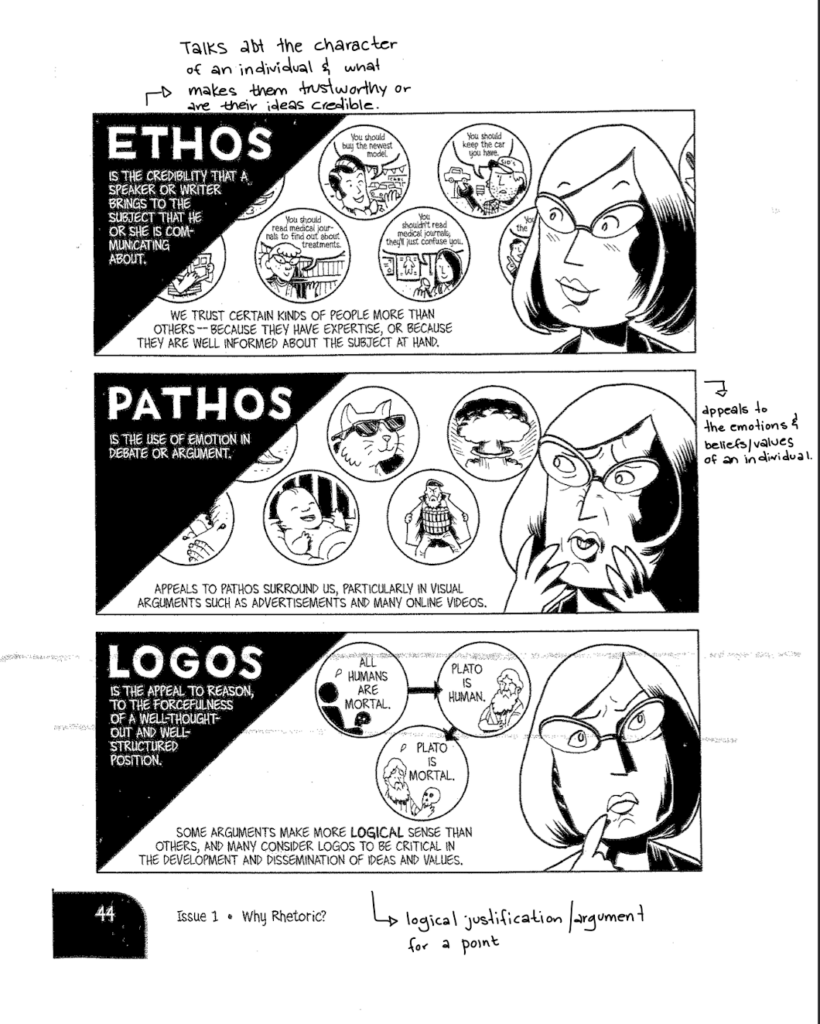Digital Receipt #2: Backpacks vs. Briefcase Response
Summary of Reading
The article describes what everyone does every day: analyzing a situation or entity based on perspectives, actions, what they see visually, and what they hear; the concept itself—rhetoric analysis— is the idea of understanding/interpreting a given argument with the notion of identifying the purpose, targeted audience, and the main reason behind making the argument in the first place. There are three main parts to understanding rhetorical moments/events: exigence, audience, and constraints. Exigence is the reason why the person (who created the argument) made it this way. The audience is the target group for that said argument. Constraints are the limits of exigence; this can be any form of limitation: forcing the exigence to be that way. The ethos, pathos, and logos of an argument also help shape the structure and strength of an argument and can change the way people perceive that said argument. When looking at a statement or argument, it is best to identify these things: which will make you understand the rhetorical analysis better.
My personal experience
Aside from the mobile ads and online sponsorships that make you want to buy a product or item of clothing, the best example in which I analyzed a situation or person (that I can think of) was when I was paired up with a research partner in my junior year of high school. The person whom I had the option of working with had a negative/not-so-popular reputation among our class. Most of the people that knew him personally said that he could be hot-headed at times and that it was not fun to work with him; he always wanted to do things his way. The ethos of such arguments made by such individuals was not of a question as they knew him better than me, some even working with him in prior years. The exigence of these arguments might have been based on the negative experiences they may have had with him, but the constraints with that exigence would be that they had not worked with him for a while, meaning he could have changed his habits. He also could have had personal issues that they were unaware he was attending to result in such work behaviors. Despite all the warnings, I still choose to partner up with him. I found out that he was hot-headed, but not due to his lack of decency, but rather his obsession with being perfect. He set an almost impossible standard for our work, one in which everything needed to hundred percent correct at all times: being with grammar, data, statistics, formatting, and more. Using opinions that I heard from close people to judge him based on his work and how he manages to work with others, I made the wrong decision of disregarding him as a tyrant: when he was not.





